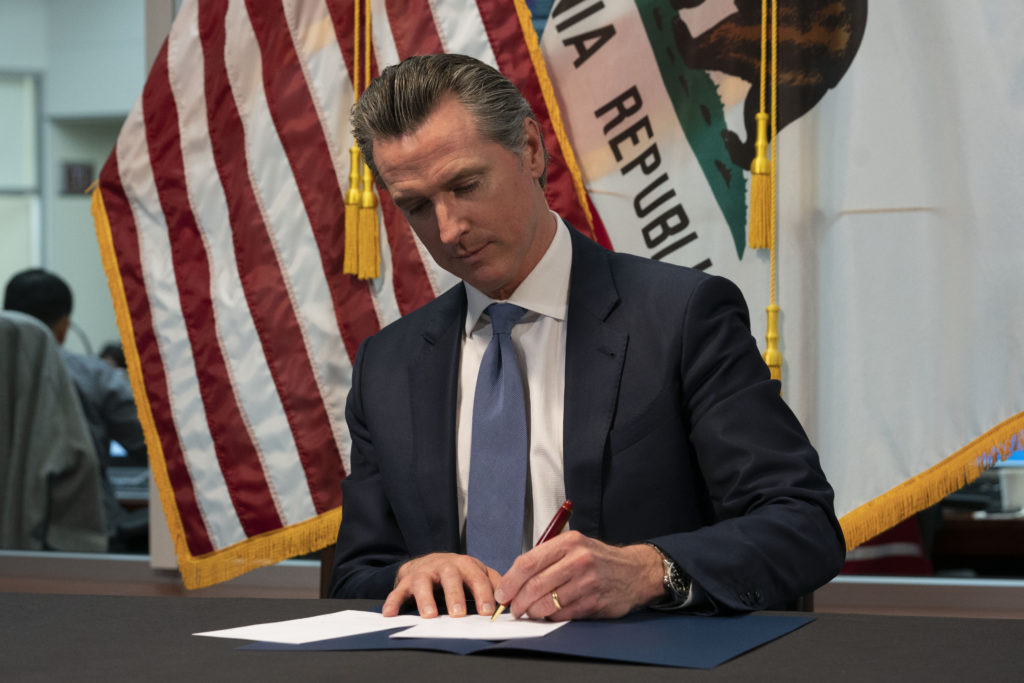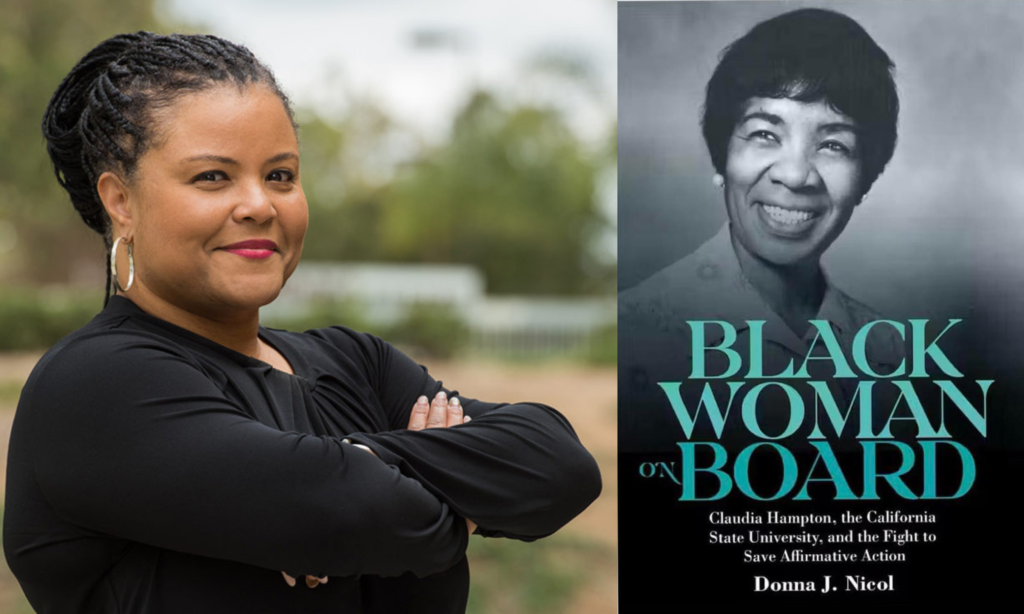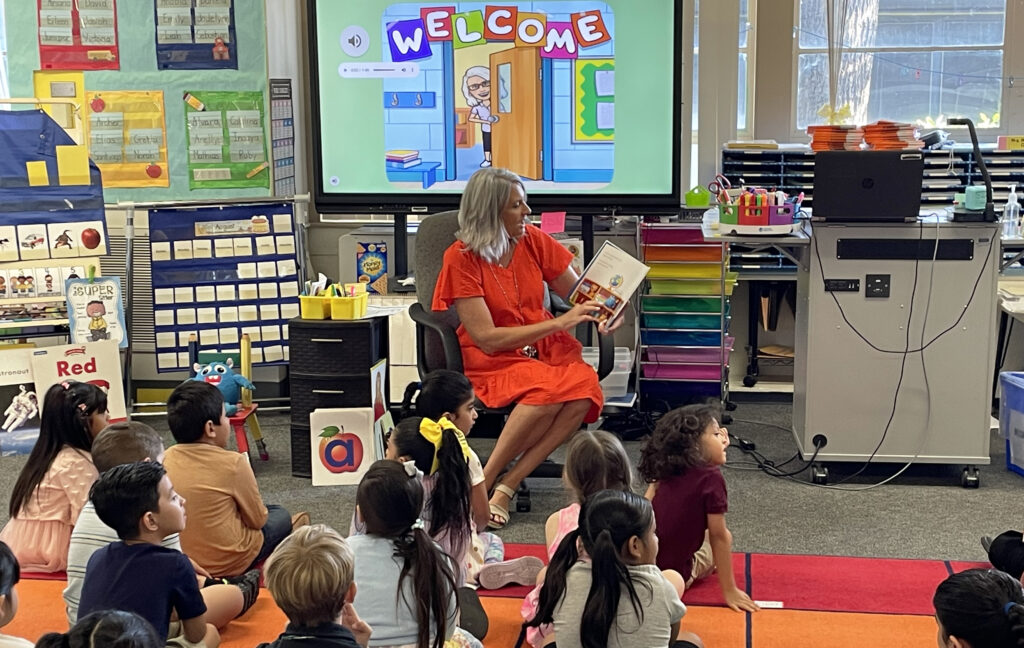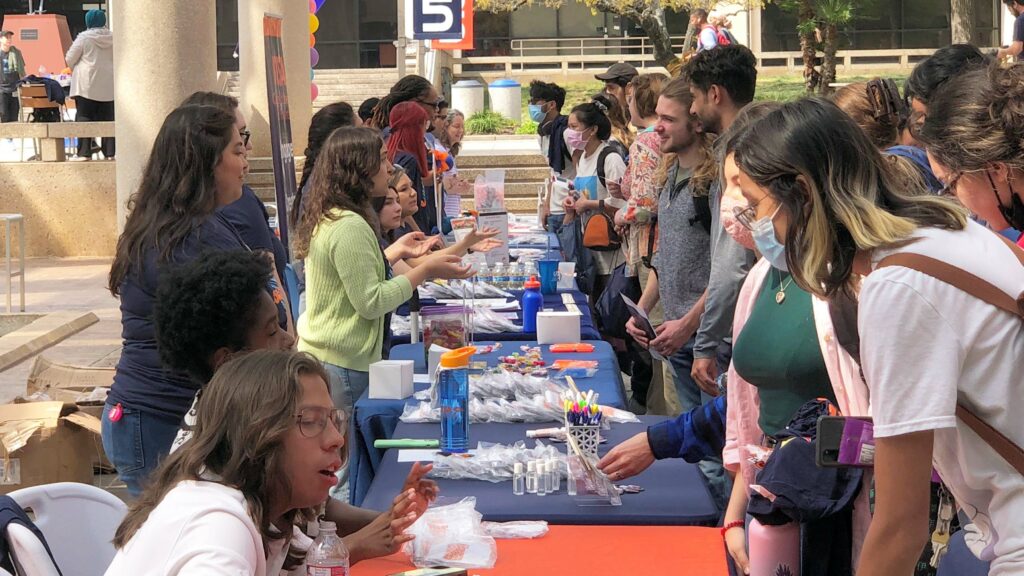
Gov. Gavin Newsom signs legislation.
Photo: Office of the Governor of California
New California state laws will protect the privacy of LGBTQ+ students, ensure that the history of Native Americans is accurately taught and make it more difficult to discriminate against people of color based on their hairstyles.
These and other new pieces of legislation will be in effect when students return to campuses after winter break.
Schools can’t require parental notification
Assembly Bill 1955, signed by Gov. Gavin Newsom in July, forbids California school boards from passing resolutions that require school staff, including teachers, to notify parents if they believe a child is transgender.
The Support Academic Futures and Educators for Today’s Youth, or SAFETY Act, also protects school staff from retaliation if they refuse to notify parents of a child’s gender preference. The legislation, which goes into effect on Jan. 1, also provides additional resources and support for LGBTQ+ students at junior high and high schools.
The legislation was created in response to the more than a dozen California school boards that proposed or passed parental notification policies in just over a year. The policies require school staff to inform parents if a child asks to use a name or pronoun different from the one assigned at birth, or if they engage in activities and use facilities designed for the opposite sex.
“Politically motivated attacks on the rights, safety and dignity of transgender, nonbinary and other LGBTQ+ youth are on the rise nationwide, including in California,” said Assemblymember Chris Ward, D-San Diego, author of the bill, in a media release. “While some school districts have adopted policies to forcibly out students, the SAFETY Act ensures that discussions about gender identity remain a private matter within the family.”
Opponents of the bill, including Assemblymember Bill Essayli, R-Riverside, indicated that the issue will be settled in court.
Accurate Native American history
Building a Spanish mission — out of Popsicle sticks or sugar cubes — was once a common assignment for fourth-grade students in California. The state curriculum framework adopted in 2016 says this “offensive” assignment doesn’t help students understand this era, particularly the experiences of Indigenous Californians subject to forced labor and deadly diseases from Spanish colonizers.
But supporters of a new law that goes into effect on Jan. 1 say that there are still grave concerns that the history of California Native Americans — including enslavement, starvation, illness and violence — is still misleading or completely absent from the curriculum.
AB 1821, authored by Assemblymember James Ramos, D-San Bernardino, aims to address this. When California next updates its history-social science curriculum — on or after Jan. 1 — it asks that the Instruction Quality Commission consult with California tribes to develop a curriculum including the treatment and perspectives of Native Americans during the Spanish colonization and the Gold Rush eras.
“The mission era of Spanish occupation was one of the most devastating and sensitive periods in the history of California’s native peoples and the lasting impact of that period is lost in the current curriculum,” according to a statement from the San Manuel Band of Mission Indians, one of the supporters of the legislation.
Teaching about desegregation in California
Another law that also goes into effect this year also requires the state to update its history-social science curriculum. AB 1805 requires that the landmark case Mendez v. Westminster School District of Orange County be incorporated into the history social-science curriculum updated on or after Jan. 1.
The case, brought in 1945, challenged four districts in Orange County that segregated students. The plaintiffs in the case were Mexican-American parents whose children were refused admission to local public schools. The case led to California becoming the first state to ban public school segregation — and it set a precedent for Brown v. Board of Education, which banned racial segregation in public schools.
The Mendez case is referenced in the history-social science curriculum that was last adopted in 2016 for fourth- and 11th-grade students, as well as the Ethnic Studies Model Curriculum, as an example of inter-ethnic bridge-building.
The Westminster School District wrote a statement in support of the law to ensure that the case is “properly recognized and rightfully incorporated into the state’s education curriculum.”
Protecting against hair discrimination
Assembly Bill 1815 makes it more difficult to discriminate against people of color, including students, based on their hairstyle. Although this type of discrimination is already prohibited by the CROWN Act, it has not extended to amateur and club sports.
The new legislation also clarifies language in the California Code, eliminating the requirement that a trait be “historically” associated with a race, as opposed to culturally, in order to be protected.
“(This bill) addresses an often-overlooked form of racial discrimination that affects our youth — bias based on hair texture and protective hairstyles, such as braids, locks, and twists,” stated a letter of support from the ACLU. “By extending anti-discrimination protections within amateur sports organizations, this bill acknowledges and seeks to dismantle the deep-rooted prejudices that impact children and adolescents of color in their sports activities and beyond.”
Protection for child content creators
Newsom signed two pieces of legislation in September that offer additional protection to children who star in or create online content.
The new laws expand state laws that were meant to protect child performers. Senate Bill 764 and Assembly Bill 1880 require that at least 15% of the money earned by children who create, post or share online content, including vloggers, podcasters, social media influencers and streamers, be put in a trust they can access when they reach adulthood.
“A lot has changed since Hollywood’s early days, but here in California, our laser focus on protecting kids from exploitation remains the same,” Newsom said in a statement. “In old Hollywood, child actors were exploited. In 2024, it’s now child influencers. Today, that modern exploitation ends through two new laws to protect young influencers on TikTok, Instagram, YouTube, and other social media platforms.”














